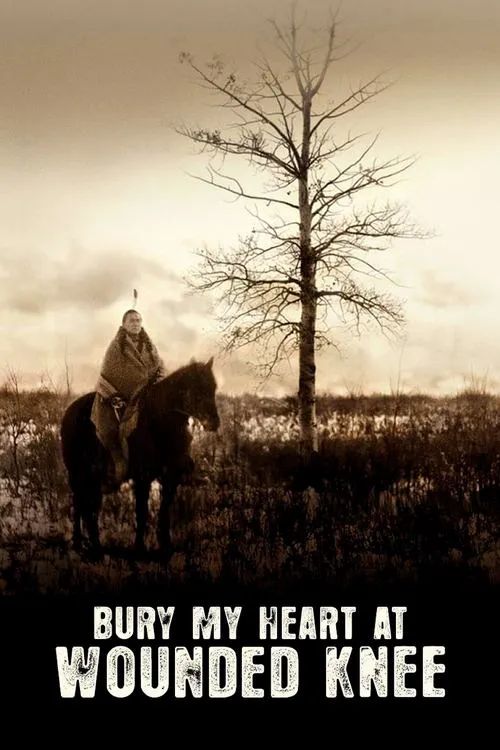Bury My Heart at Wounded Knee

Plot
Set against the backdrop of the late 19th century, Bury My Heart at Wounded Knee is a poignant and powerful portrayal of the United States government's brutal and systematic attempt to erase the Native American culture. The film begins immediately after the pivotal Battle of Little Big Horn, a bloody and decisive victory for the Sioux, where General George Armstrong Custer and his men met their demise. Through the intertwined narratives of Charles Eastman, a young Sioux doctor educated in the white man's world, and Sitting Bull, the proud and revered Lakota chief, the film offers a unique and multifaceted exploration of the Native American experience. While Eastman serves as a symbol of the failed assimilation efforts, Sitting Bull embodies the fierce resistance and resilience of the Native American people. As the story unfolds, we learn that Eastman has returned to his tribe after being educated at Carleton College, where he studied medicine. He is initially met with skepticism by his people, who question the value of the white man's education in their traditional way of life. However, Eastman's medical skills soon earn him the respect of the tribe, and he becomes a bridge between the two cultures. Meanwhile, Sitting Bull, the wise and powerful leader of the Hunkpapa Lakota, has returned from his exile in Canada, where he had fled in an attempt to avoid the encroaching forces of the United States government. His people revere him as a hero, and he is determined to protect their land and way of life. As winter sets in, the Sioux gather at Wounded Knee Creek, where they are met by a contingent of U.S. soldiers. The stage is set for a confrontation that will have far-reaching and devastating consequences for the Native American people. The U.S. government, driven by a relentless expansionist agenda, seeks to eliminate the Native American tribes and claim their land as its own. The Dawes Act of 1887, which allowed the government to divide tribal land into individual allotments, has further accelerated the erosion of Native American sovereignty and economic self-sufficiency. As the story unfolds, we see the effects of this policy in microcosm: families torn apart, cultural heritage erased, and the traditional way of life shattered by the relentless march of progress. The U.S. government, driven by a paternalistic attitude towards the Native American people, views them as inferior and in need of "civilizing." Eastman, increasingly disillusioned with his role as a symbol of assimilation, finds himself caught between his loyalty to his people and his duty to uphold the principles of his education. Sitting Bull, meanwhile, remains steadfast in his commitment to his people, refusing to accept the terms of their subjugation. The tensions between the U.S. government and the Sioux come to a head at Wounded Knee, where a confrontation erupts into violence. The scene is brutal and intense, as the U.S. soldiers, armed with rifles and Gatling guns, mow down the defenseless Sioux. The carnage is devastating, with women and children caught in the crossfire. As the dust settles, the survivors are left to pick up the pieces, their numbers decimated and their culture irreparably damaged. Sitting Bull, mortally wounded in the confrontation, is hunted down and killed in a desperate attempt to escape capture. In the aftermath of the Wounded Knee Massacre, Eastman is left to confront the truth of his own identity. No longer able to reconcile his dual worlds, he abandons his medical practice and returns to his people, determined to help them rebuild and reclaim their place in the world. As the film concludes, we are left to ponder the enduring legacy of the Native American experience. The Wounded Knee Massacre stands as a stark reminder of the brutal price exacted in the name of progress, a brutal reminder of the devastating cost of cultural erasure and the ongoing struggle for Native American rights. In the end, Bury My Heart at Wounded Knee is a story of resilience and hope, a testament to the unbreakable spirit of the Native American people. As the survivors struggle to rebuild and reclaim their place in the world, we are reminded of the enduring power of culture and tradition, and the importance of preserving the history of our collective past.
Reviews
Recommendations




